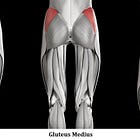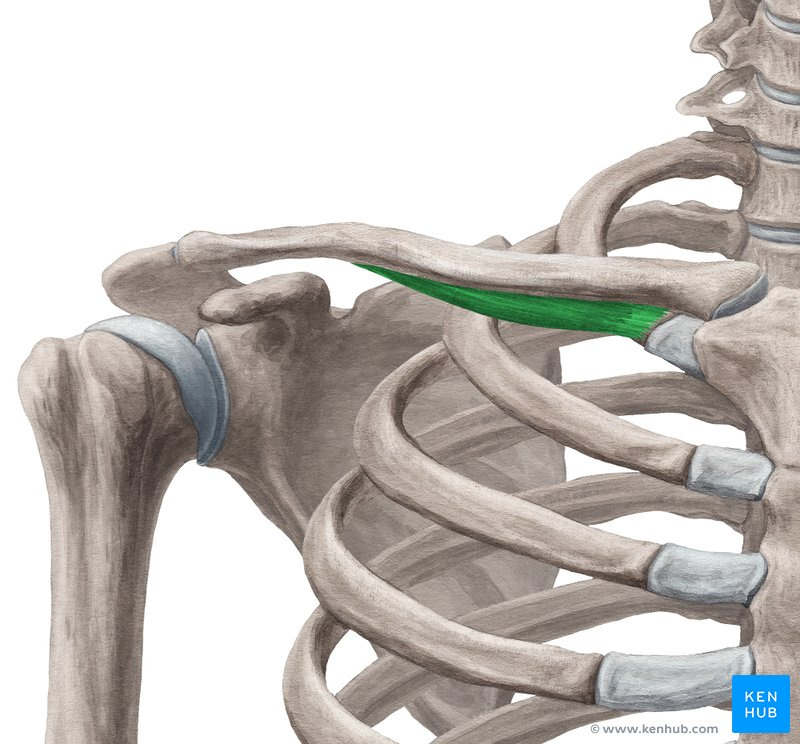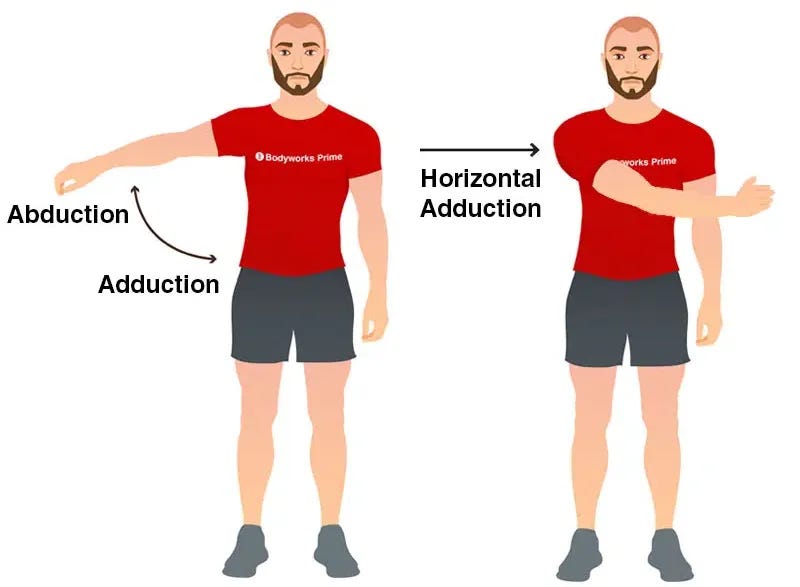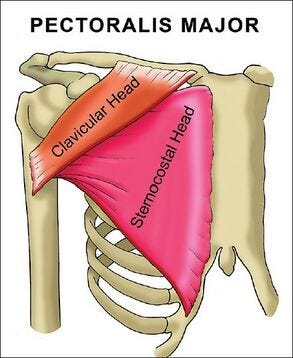Having spent the past few weeks looking at the major muscles in the lower body, this week, we are changing things up and taking a tour of the major muscles of the chest.
If you missed last week’s overview of the glutes, be sure to give that a read by tapping the link below.
Last week, I wrote that my goal for 2025 was to reach 500 free subscribers on Substack. I thought that this was a realistic goal, but it would take time. At the time of writing, we have 215 subscribers, nearly double last week’s total. Thank you to all who continue to share my work. You can subscribe for free, share the article, or follow me on Instagram using the buttons below. If you’re really keen, you can also refer a friend!
Muscles of the chest
It seems we are never too far from hearing about the ‘pecs’. The pectoral muscles are a major component of the chest, but they are not the only ones. I have outlined the big players below.
The pectoralis major is the largest and strongest chest muscle. It is also the most superficial (remember, this means that it is the closest to the surface of the skin) and is roughly fan-shaped.
The pectoralis minor is a much smaller chest muscle. It sits deeper, underneath the pectoralis major, and is triangular. It almost looks like it has ‘fingers’ reaching toward and joining the 3rd, 4th, and 5th ribs.
The serratus anterior is the final major player in the chest. Situated slightly further round the torso than the pectoralis muscles, again, it almost has ‘fingers’ or ‘teeth’ (serratus comes from the Latin word for ‘saw’), which join onto the first 8 or 9 ribs.
Let’s squeeze in a bonus muscle. The subclavius is a tiny muscle which sits along the border of the first rib. I have included a picture below and will outline its role in the following segment.
Function of the chest muscles
The functions of the chest muscles can be complex to understand as, for example, the pectoralis major has two heads with slightly differing roles. I will try to make the following segment as easy to follow as I can.
The pectoralis major
As mentioned, the pectoralis major has two heads with independent functions, which are outlined below.
When working as a whole, the pectoralis major muscle is responsible for the adduction and internal rotation of the humerus bone in the upper arm. These are the movements involved in, say, flapping your arms by your side and when arm wrestling. It is also responsible for horizontal adduction, which still involves bringing the arm closer to the midline, except in the horizontal plane, such as when drawing the curtains closed. Again, I will insert an image below.
However, the two heads also have slightly different functions:
The clavicular head is smaller and originates from the clavicle.
The sternocostal head is significantly larger and originates from the sternum and ribs (specifically the costal cartilage).
The Clavicular head
This is partially responsible for the flexion of the arm at the shoulder joint.
The sternocostal head
Is partially responsible for the extension of the arm at the shoulder joint.
The pectoralis minor
The pectoralis minor largely acts on the scapula, or shoulder blade. It can assist with the stabilisation of the scapula, but can also aid other muscles in depression (moving downward), abduction, protraction (bringing forward), and internal and downward rotation of the shoulder. It is also an accessory muscle for breathing, or respiration, and helps to lift the ribs for a deep inhale.
The serratus anterior
The serratus anterior is also key for scapular movement and stabilisation. In particular, it is the major muscle involved in scapular protraction, as well as upward rotation, making it important for overhead movements.
The subclavius
The smallest muscle of the bunch has a much lesser role but is still important. It is chiefly responsible for the stabilisation of the clavicle (collarbone) and also helps to depress it for respiration.
Unique conditions (Besides strains and tears)
There are a few unique conditions involving the pectoral area. I have listed some briefly below, but the list is not exhaustive by any means.
Winged scapula
Whilst the scapula is technically not in the chest, there is good reason to put this condition here. A winged scapula is a condition which presents as the shoulder blade protruding more obviously from the back than it typically should. The most common cause of this is actually due to paralysis or dysfunction of, amongst other muscles, the serratus anterior, which is often related an injury of the long thoracic nerve.
Poland syndrome
This refers to a condition whereby the affected individual has an underdeveloped chest on one side of the body. Often, the pectoralis major muscle is missing completely on just one side.
Pectus carinatum & excavatum
Sometimes (unkindly) referred to as “pigeon chest” and “sunken chest”.
Individuals with these conditions either possess a breastbone which grows outward and protrudes more (carinatum), or grows inward and is more indented than it typically should (excavatum).
Strengthening the chest muscles
The chest muscles are typically used in ‘pushing’ or ‘pressing’ type movements. Therefore, a great range of exercises, using free weights, machines, and even your bodyweight, can be used to target these muscles. A list of the most common exercises can be found below. Note: certain exercises can be modified to adjust the relative contribution of each chest muscle. For example, it is possible, with a modified, or kneeling pushup, to target the serratus anterior more than the other muscles.
Flat or incline bench press, using either a barbell or dumbbells.
Flat or incline dumbbell fly.
Any push-up variation: incline, decline, kneeling, hand-release to name a few.
Horizontal bar dips, with a particular focus on a slight forward lean to emphasise the contribution of the chest muscles more than the tricep muscles.
Machine chest press
‘Pec deck’ machine
Cable crossover or cable fly
Thanks again for reading through the latest edition of Muscle Monday. If you are enjoying these articles, please share them far and wide. If you’re feeling super generous, you can even upgrade to a paid subscription, to help fund educational materials such as courses, books and ebooks in the future.








